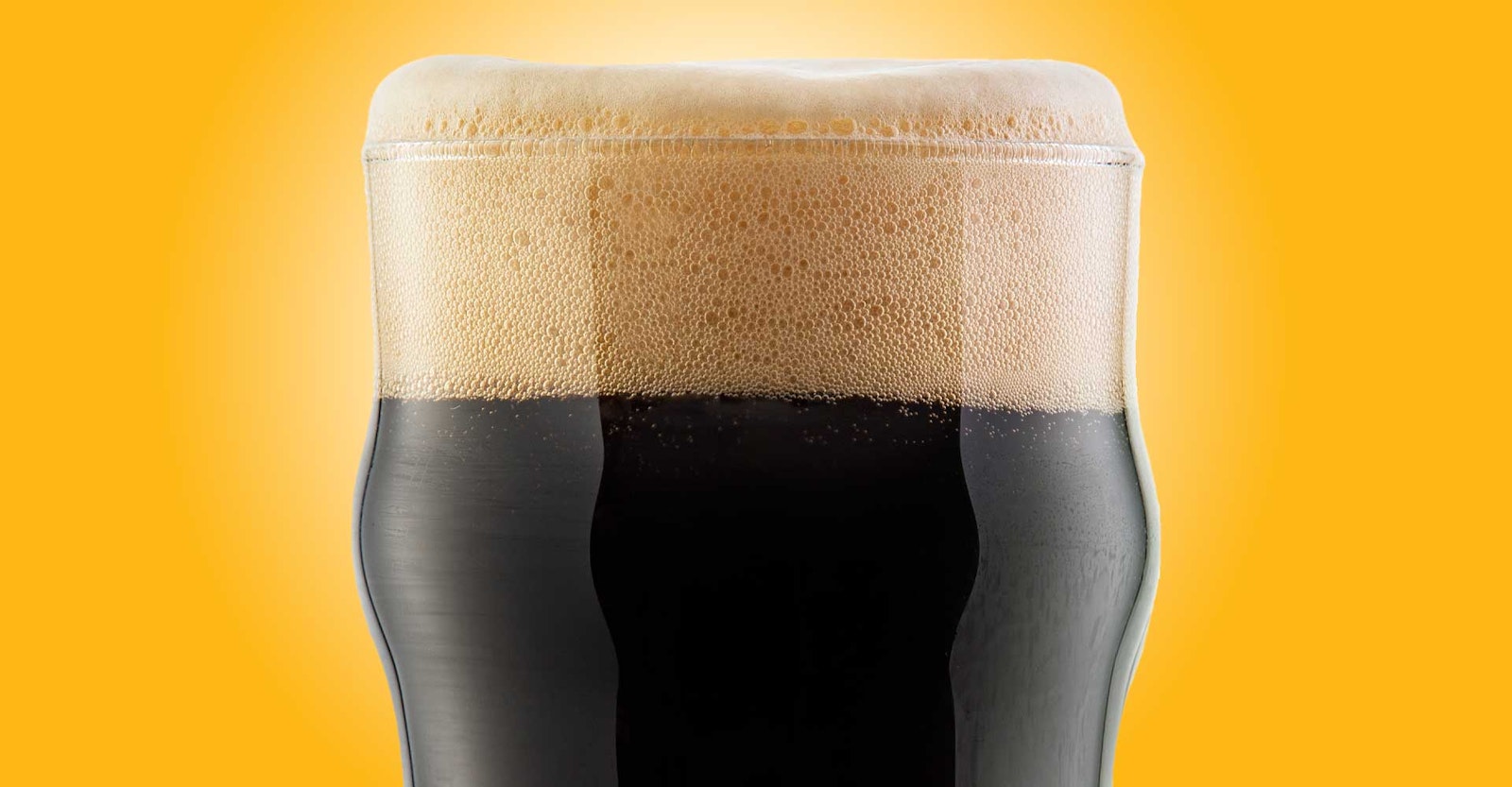American Porter
If you’re looking for American porters to inspire your own brewing, there are some excellent examples out there—Deschutes Black Butte and Port City Porter are just a couple that spring to mind. However, one that will always be part of that conversation is the beguiling and immediately likable Edmund Fitzgerald from Great Lakes in Cleveland.
It’s won five Great American Beer Festival medals since its release in 1991, and it remains one of the most enjoyable “gateway” beers you could hope to find. For any friends or family ready to get out of their pale-and-easygoing comfort zone—i.e., they drink mostly light lager and the occasional Kölsch—Edmund Fitzgerald is a clever piece of bait to set in the trap, with its mellow roast profile fully backed by a lush malt body to push those comforting chocolate and coffee flavors.
Here, Great Lakes brewmaster Mark Hunger joins Michael Williams, the brewery’s education coordinator, to give us the lowdown on their approach to brewing this pillar of American craft.
Notes from the Pros: Great Lakes started in 1988 as a Cleveland brewpub and Ohio’s first craft brewery of the modern era. From the start, one of its year-round offerings was Edmund Fitzgerald Porter, whose name memorializes the famous 1975 sinking of a freighter in Lake Superior. In spirit and in profile, this porter is a throwback to the early days of American craft.
“As a 35-year-old brewery, our classic beers like Edmund Fitzgerald Porter exhibit the balance and drinkability one expects in a recipe drawn up in the early ’90s,” Hunger says.
It’s true: The recipe is straightforward, by today’s standards—or elegant, if you prefer—avoiding the kind of embellishment we often find in more recent recipes and approaches. Commenting on this simplicity, Williams says the recipe is “very much directly inspired by its British forebears but brewed with American craft-brewing ingredients. We strive to make these beers benchmarks of classic styles.” The brewery’s cabinet full of medals is strong evidence that they have succeeded in that.
So, what makes Edmund Fitzgerald’s recipe special?
“Our longtime beers all include some subtle twists one might not expect,” Williams says. “In Edmund Fitzgerald, we use a small percentage of roasted barley, an ingredient that at one point was much more well-known for being used in dry stout as opposed to porter.”
While many brewers still recite the (not really a) rule that “what makes a stout a stout is roasted barley,” there’s no reason you can’t use both chocolate malt and roasted barley for added complexity—and that’s the case with Edmund Fitzgerald.
Asked if there are any pitfalls to avoid, Hunger identifies a key consideration: “It’s a robust porter, but that doesn’t mean in-your-face intensity,” he says. “No lactose, no high finishing gravity, no adjuncts. Just a nuanced grain bill, textbook hop additions, and old-school ale fermentation character, resulting in a flavorful but quaffable pint.”
Going deeper on the technical side of mashing this beer, the brewmaster has an important suggestion to preserve drinkability: “As with any dark-malt beer especially, be careful with your temperatures while sparging, to avoid over-extraction of tannins and astringent character from the darker grains. That roasted barley addition in particular can go from bittersweet dark chocolate to five-hour-old gas station coffee pot pretty quickly if you over-extract.”
That wonderfully vivid metaphor is exactly what happens to many porters and stouts that lean into roasted malts without careful mashing—especially once a touch of oxidation sets in.
Translation and Application: The Edmund Fitzgerald recipe isn’t a fussy one, and both the ingredients and process drive this beer to its “flavorful but quaffable” destination.
The contours are refreshingly simple: four grains, three conventionally timed hop additions, and a single-stage fermentation. The ingredients follow a British-American track that suits the style, getting a British ale yeast and distinctively American hops that have some English genetics. (Fuggles is a parent of both Cascade and Willamette, while Nugget is a daughter of Brewer’s Gold.)
Amid the elegance, there is a notable twist: a step mash. The first step (150°F/66°C) is at the upper edge of the beta-amylase range, the second (160°F/71°C) is in the upper alpha-amylase territory, while the third is a typical mash-out temperature of 170°F (77°C) to halt conversion. This should lead to a more fermentable wort to help balance the relatively high portion of dextrin-rich crystal malts. You could try a single-infusion mash if you prefer, but this may be one of those details that makes Edmund Fitzgerald what it is. Again, watch those sparge-water temperatures to avoid over-extraction of tannins; don’t go above that mash-out temperature if you can help it.
Fermentation begins on the lower end of the temperature range for London Ale, but it picks up a diacetyl rest that will further help attenuation, so expect a relatively dry finish. Great Lakes also give this beer a brisk level of carbonation, with Hunger recommending 2.65 volumes.
Finally, Hunger says they add a dash of calcium sulfate to their moderately hard local water; this will add to the crisp, flinty character that Wyeast 1028 tends to impart. Know your own water before making an adjustment, but this is a pretty safe addition to include. It isn’t uncommon in British-style ales—you’ll find similar use of gypsum in many classic recipes for English pale ales and bitters—and it can be a great way to balance a beer with a lot of caramel and chocolate malt.
Final Thoughts: You really can’t go wrong with American porter—it’s a style with room for interpretation and experimentation, and the Great Lakes team has long set the bar high with Edmund Fitzgerald. It’s hard to imagine a better starting point for finding your own take on a style that still has the power to open the eyes of unsuspecting drinkers.

